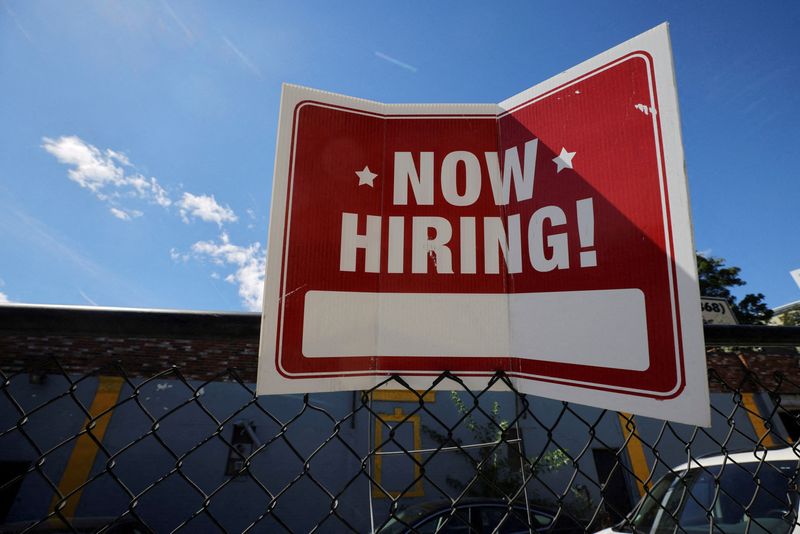Who is Kevin Hassett? Wolfe looks at the Trump ally tipped to become Fed Chair.
By Dan Burns
(Reuters) -The number of Americans filing new claims for unemployment benefits edged down last week, signaling that layoffs remain low even as the still-strong job market shows some signs of cooling.
Initial claims for state unemployment benefits fell 3,000 to a seasonally adjusted 217,000 for the week ended Nov. 4 from an upwardly revised 220,000 in the prior week, the Labor Department said on Thursday. Economists polled by Reuters had forecast 218,000 claims for the latest week.
Meanwhile, the rolls of those receiving benefits after an initial week of aid, a proxy for hiring, rose for a seventh straight week to 1.834 million during the week ending Oct. 28, the highest level since April, the claims report showed.
Some economists contend the rise in continuing claims reflects difficulties adjusting the data for seasonal fluctuations.
Others, however, say the persistence of the recent rise indicates that while new layoffs remain subdued, those out of work are experiencing a harder time finding a new job. That would be consistent with the latest hiring data showing the job market is cooling.
Last week the Labor Department reported the pace of hiring slowed in October and unemployment ticked higher, although joblessness - at 3.9% last month - remains historically low. A separate report showed that there were 1.5 job openings for every unemployed person in September, down from around 2-to-1 when the job market was the most tight last year.
The claims data adds to the case for the U.S. Federal Reserve to keep interest rates on hold for now, economists said.
"The claims data are consistent with a job market that is cooling enough to keep rate hikes off the table for now, but still too strong to make rate cuts a consideration any time," Nancy Vanden Houten, lead U.S. economist at Oxford Economics, said in a note. "The Fed needs to see enough softening of labor market conditions and wage growth to be persuaded that inflation is on a sustainable path back to 2%."
The U.S. central bank held interest rates steady last week but left the door open to a further increase in borrowing costs in a nod to the economy's resilience.
Since March 2022, the Fed has raised its policy rate by 525 basis points to the current 5.25%-5.50% range to beat back inflation that last year topped 7% by its preferred measure. It has since fallen to 3.4% but has made little further downward progress in recent months, although some underlying measures have continued to decline.
The Fed meets once more this year, in mid-December, and interest rate futures markets reflect less than a 10% probability that policymakers will raise rates then, according to CME Group's (NASDAQ:CME) Fed Watch tool. Indeed, rates markets foresee no more increases, with cuts priced in by the summer of 2024.
Vanden Houten, however, said she expects job market conditions to soften slowly, and now expects the first Fed rate cut to happen in September rather than May as she had previously forecast.
